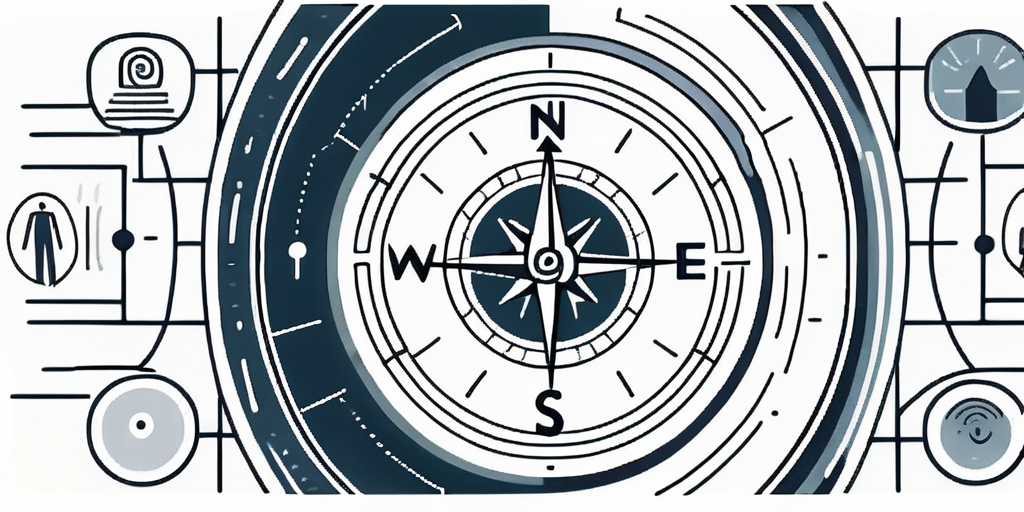Customer Persona: Customer Experience Explained
In the realm of customer experience, one term that often surfaces is 'Customer Persona'. This term, while seemingly straightforward, carries a wealth of meaning and implications for businesses and marketers alike. A customer persona, in essence, is a semi-fictional representation of your ideal customer based on market research and real data about your existing customers. It helps businesses to understand their customers better and ensures that they are always the central focus of any marketing strategy.
Understanding customer personas is crucial to delivering an exceptional customer experience. It allows businesses to tailor their products, services, and communications to meet the specific needs and preferences of different customer groups. This article delves into the concept of customer persona in the context of customer experience, exploring its various facets, importance, and how it can be effectively utilized.
Defining Customer Persona
A customer persona, also known as a buyer persona or marketing persona, is a detailed profile of a representative customer for a product or service. It is created based on demographic data, psychographic data, behavioral data, and customer feedback. The objective is to humanize the customer data and analytics into a relatable character that embodies the characteristics of a significant segment of your audience.
 Creating a customer persona involves a deep understanding of customer needs, motivations, preferences, and behaviors. It requires businesses to step into their customers' shoes and see the world from their perspective. This understanding is then used to guide product development, marketing strategies, sales techniques, and customer service approaches.
Creating a customer persona involves a deep understanding of customer needs, motivations, preferences, and behaviors. It requires businesses to step into their customers' shoes and see the world from their perspective. This understanding is then used to guide product development, marketing strategies, sales techniques, and customer service approaches.
Components of a Customer Persona
A comprehensive customer persona includes a variety of components, each contributing to a holistic understanding of the customer. These components typically include demographic information such as age, gender, income, education level, and location. They also encompass psychographic factors like interests, hobbies, values, attitudes, and lifestyle.
Other important components include behavioral tendencies, such as purchasing habits, brand preferences, and digital behavior. Additionally, customer feedback and insights, such as their pain points, needs, and goals, are crucial to creating a well-rounded customer persona. Each of these components helps paint a vivid picture of who the customer is, what they want, and how they behave.
Types of Customer Personas
There are several types of customer personas that businesses can create, each serving a unique purpose. The most common types include demographic personas, psychographic personas, behavioral personas, and customer journey personas. Demographic personas are based on demographic data, while psychographic personas focus on psychological characteristics.
Behavioral personas, on the other hand, are built around the customer's behaviors, such as their purchasing habits and brand interactions. Customer journey personas map out the customer's journey from awareness to purchase, highlighting their experiences and interactions at each stage. The type of persona created depends on the business's objectives and the nature of its customer base.
Importance of Customer Persona in Customer Experience
Customer personas play a pivotal role in shaping the customer experience. They enable businesses to understand their customers on a deeper level, allowing them to create products, services, and experiences that resonate with their target audience. By understanding who their customers are, what they want, and how they behave, businesses can tailor their offerings to meet their customers' specific needs and preferences.
Furthermore, customer personas can help businesses identify gaps in their current customer experience and find ways to improve. They can highlight areas where the business is not meeting customer expectations, providing valuable insights that can drive customer experience enhancement initiatives.
Personalization
One of the key benefits of customer personas is that they enable personalization. With a deep understanding of the customer, businesses can personalize their products, services, and communications to cater to individual customer needs and preferences. This can enhance the customer experience, leading to increased customer satisfaction and loyalty.
Personalization can take many forms, from personalized product recommendations to tailored marketing messages. By delivering personalized experiences, businesses can make their customers feel valued and understood, fostering a stronger connection between the customer and the brand.
Customer Journey Mapping
Customer personas also play a crucial role in customer journey mapping. By understanding the customer's needs, motivations, and behaviors, businesses can map out the customer's journey from awareness to purchase. This can help businesses identify touchpoints where they can enhance the customer experience, leading to improved customer satisfaction and loyalty.
Customer journey mapping can also highlight areas where the business is falling short in delivering an exceptional customer experience. These insights can be used to drive improvements, ensuring that the business is always meeting or exceeding customer expectations.
Creating Effective Customer Personas
Creating effective customer personas is a process that requires careful research, analysis, and creativity. It involves gathering and analyzing customer data, identifying common characteristics and patterns, and crafting a persona that accurately represents a significant segment of your audience.
The process begins with data collection. This can involve a variety of methods, from surveys and interviews to data mining and analytics. The goal is to gather as much information as possible about your customers, including their demographics, psychographics, behaviors, and feedback.
Data Analysis
Once the data has been collected, the next step is analysis. This involves identifying patterns and commonalities in the data, such as common demographic characteristics or shared behaviors. These patterns can then be used to segment the customer base into distinct groups, each represented by a customer persona.
The analysis should also identify key customer needs, motivations, and pain points. These insights can be used to enrich the customer persona, making it more representative of the customer segment it represents.
Persona Creation
With the data analyzed, the next step is to create the customer persona. This involves crafting a detailed profile of a representative customer, including their demographics, psychographics, behaviors, and feedback. The persona should be as detailed as possible, providing a vivid picture of who the customer is, what they want, and how they behave.
The persona should also include a narrative that tells the customer's story. This can include their goals, challenges, and experiences, providing a human element to the persona. The narrative can help businesses empathize with their customers, leading to more customer-centric decisions and strategies.
Utilizing Customer Personas in Customer Experience Strategy
Once the customer personas have been created, the next step is to utilize them in your customer experience strategy. This involves using the personas to guide decision-making, from product development to marketing to customer service.
 For example, in product development, the personas can be used to identify customer needs and preferences, guiding the design and features of the product. In marketing, the personas can inform the messaging and channels used, ensuring that the marketing resonates with the target audience. In customer service, the personas can help identify common customer issues and solutions, improving the effectiveness of customer support.
For example, in product development, the personas can be used to identify customer needs and preferences, guiding the design and features of the product. In marketing, the personas can inform the messaging and channels used, ensuring that the marketing resonates with the target audience. In customer service, the personas can help identify common customer issues and solutions, improving the effectiveness of customer support.
Product Development
In product development, customer personas can provide valuable insights into what customers want and need. By understanding the customer's needs, preferences, and pain points, businesses can design products that meet these needs and solve these pain points. This can lead to products that are more appealing to customers, leading to increased sales and customer satisfaction.
Furthermore, customer personas can help businesses prioritize product features and improvements. By understanding which features are most important to customers, businesses can prioritize these features in their development roadmap, ensuring that they are delivering value to their customers.
Marketing
In marketing, customer personas can guide the messaging and channels used. By understanding the customer's interests, values, and behaviors, businesses can craft marketing messages that resonate with the customer. This can lead to more effective marketing campaigns, resulting in increased brand awareness and customer engagement.
Furthermore, customer personas can help businesses identify the most effective marketing channels. By understanding where the customer spends their time and how they consume information, businesses can select the channels that are most likely to reach the customer, increasing the effectiveness of their marketing efforts.
Customer Service
In customer service, customer personas can help businesses identify common customer issues and solutions. By understanding the customer's experiences and feedback, businesses can anticipate common issues and prepare solutions in advance. This can lead to more efficient and effective customer service, resulting in increased customer satisfaction and loyalty.
Furthermore, customer personas can help businesses personalize their customer service. By understanding the customer's needs and preferences, businesses can tailor their customer service to meet these needs, making the customer feel valued and understood.
Challenges in Creating and Using Customer Personas
While customer personas can provide valuable insights and guide decision-making, creating and using them is not without challenges. One of the main challenges is the collection and analysis of customer data. This can be a time-consuming and complex process, requiring expertise in data collection methods and analysis techniques.
 Another challenge is ensuring that the personas are representative of the customer base. This requires a deep understanding of the customer base and the ability to identify common characteristics and patterns. If the personas are not representative, they may not provide accurate insights, leading to ineffective decisions and strategies.
Another challenge is ensuring that the personas are representative of the customer base. This requires a deep understanding of the customer base and the ability to identify common characteristics and patterns. If the personas are not representative, they may not provide accurate insights, leading to ineffective decisions and strategies.
Data Collection and Analysis
Data collection and analysis is a crucial part of creating customer personas, but it can also be a challenging one. It requires businesses to gather a large amount of data, from a variety of sources, and analyze it to identify patterns and commonalities. This can be a complex and time-consuming process, requiring expertise in data collection methods and analysis techniques.
Furthermore, businesses must ensure that the data they collect is accurate and reliable. If the data is inaccurate or unreliable, the personas created from it may not be accurate, leading to ineffective decisions and strategies.
Representativeness
Ensuring that the customer personas are representative of the customer base is another challenge. This requires a deep understanding of the customer base and the ability to identify common characteristics and patterns. If the personas are not representative, they may not provide accurate insights, leading to ineffective decisions and strategies.
Furthermore, businesses must ensure that they are creating a diverse range of personas. If all the personas are similar, they may not capture the full range of customer experiences and perspectives, leading to a narrow understanding of the customer base.
Conclusion
In conclusion, customer personas are a powerful tool for understanding customers and enhancing the customer experience. They provide a detailed and humanized view of the customer, guiding decision-making and strategy in product development, marketing, and customer service. While creating and using customer personas can be challenging, the insights they provide can lead to more customer-centric decisions and strategies, resulting in improved customer satisfaction and loyalty.
As businesses continue to strive for exceptional customer experiences, customer personas will undoubtedly remain a crucial tool. By understanding their customers on a deeper level, businesses can create experiences that resonate with their customers, fostering a stronger connection between the customer and the brand. In the end, a deep understanding of the customer is the key to delivering an exceptional customer experience.